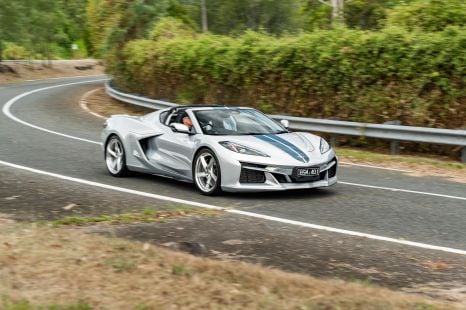

CarExpert.com.au
The CarExpert team's favourite cars of 2025
4 Hours Ago
Volkswagen is gunning for the Model Y in the mid-sized electric vehicle segment. Has it got the goods to compete?
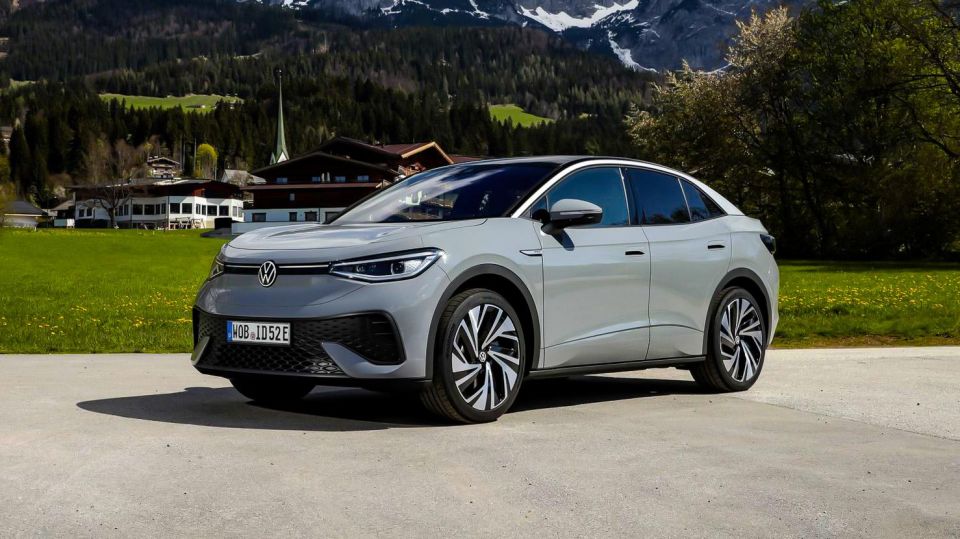
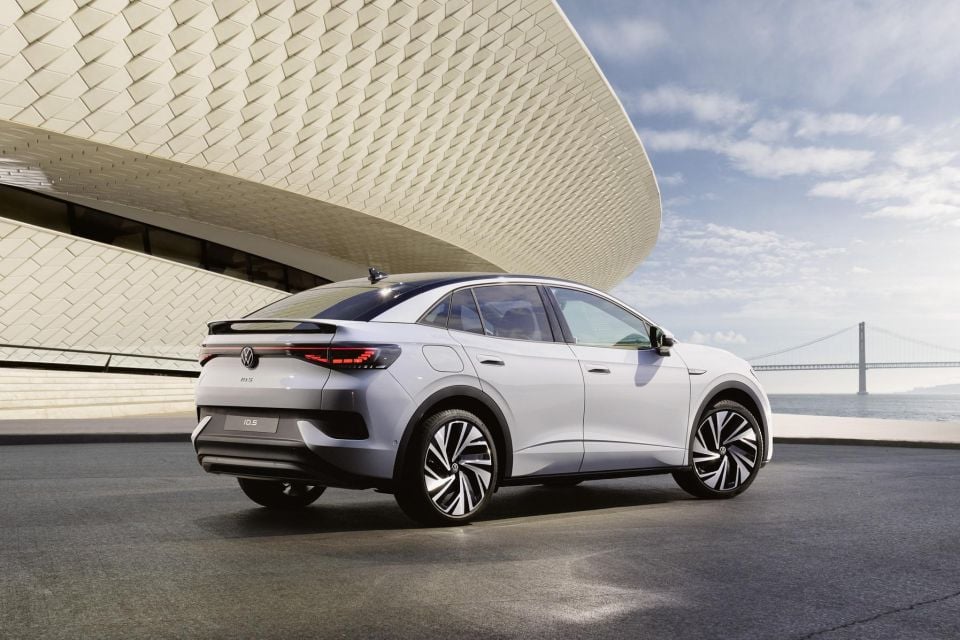

Founder

Founder


Founder

Founder
Where expert car reviews meet expert car buying – CarExpert gives you trusted advice, personalised service and real savings on your next new car.
Volkswagen has a stack of electric vehicles headed to Australia over the coming years, from the pint-sized ID.2all – which will also spawn the first all-electric GTI hot hatch in 2027 – to the ID.Buzz Kombi van.
The German brand’s competitor to Australia’s best-selling electric vehicle – the Tesla Model Y – is the mid-sized ID.4, along with the ID.5 on test here; which features a swooping rear more in line with ‘SUV Coupes’.
We had the chance to test the sporty dual-motor all-wheel drive 2024 Volkswagen ID.5 GTX in Germany along stretches of Autobahn, along with a run up and down Austria’s highest mountain, the Grossglockner.
The ID.5 isn’t expected to go on sale in Australia until mid-2024. As such, pricing is STILL to be confirmed, but Volkswagen is adamant it will go head-to-head with the Model Y on pricing.

That could mean an entry-level starting price of around $67,000 before on-road costs for the entry-level rear-wheel drive model, climbing to around $80,000 for the sporty ID.5 GTX tested here (assuming Volkswagen will want to match the Tesla Model Y Long Range on pricing).
Complicating things slightly – Volkswagen is expected to update the ID.4 and ID.5 with new motors before they drop in Australia, so there’s a chance performance may improve and exceed that of competitors like the Model Y Long Range.
These updates were announced while we were driving these vehicles, but it’s unclear what combination of these we’ll get in Australia.
Buy your new car without the stress. It's fast, simple and completely free.

Great service from Travis and team, second time I have used this business would not hesitate to recommend them to anyone
Craig C.
Purchased a Ford Ranger in Sunshine Coast, QLD
CarExpert helped Craig save thousands on his Ford Ranger, now let us save you on your next new car.
Find a dealSitting on a wheelbase of around 2.8m, there is a reasonable amount of spare inside the ID.5’s cabin. Leg and headroom in the second row is good, but headroom can be a little compromised due to the swooping roofline of the second row.
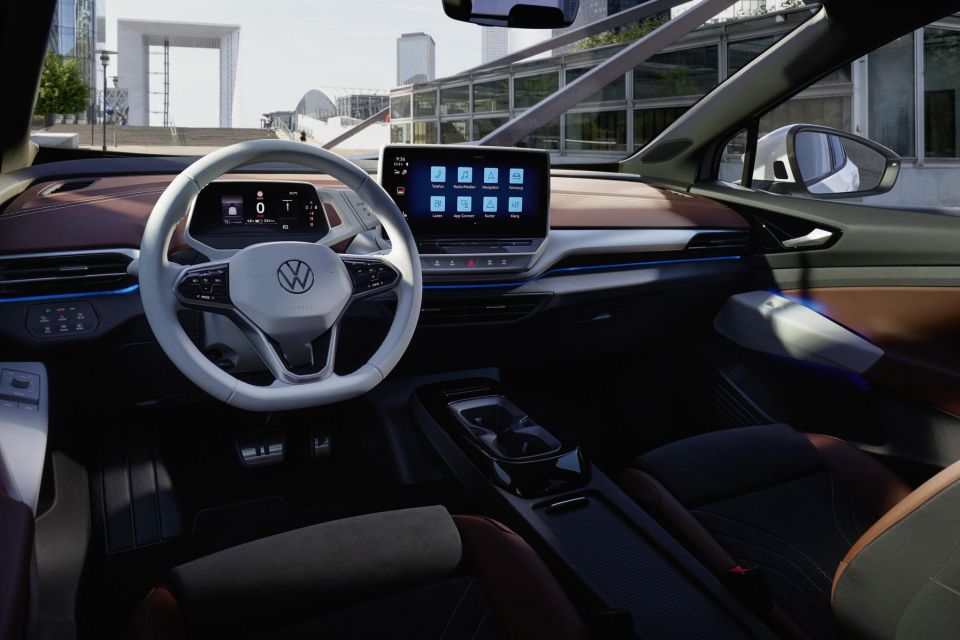
Outside of that, there’s plenty of storage up front, making use of the advantages an electric vehicle platform offers.
There’s extensive use of LED backlighting throughout the cabin, along with a head-up display that includes an augmented reality (AR) function to assist with navigation prompts.
One of my favourite features is a small display ahead of the driver that details things like speed, range and trip information. It’s a simple, but effective way of removing the need to twist your head to review the contents of the central screen.
Speaking of the central screen. Both it and the centre console are clad with piano black material. It’s hard to keep clean and scratches easily, bringing the look and feel of the cabin down.

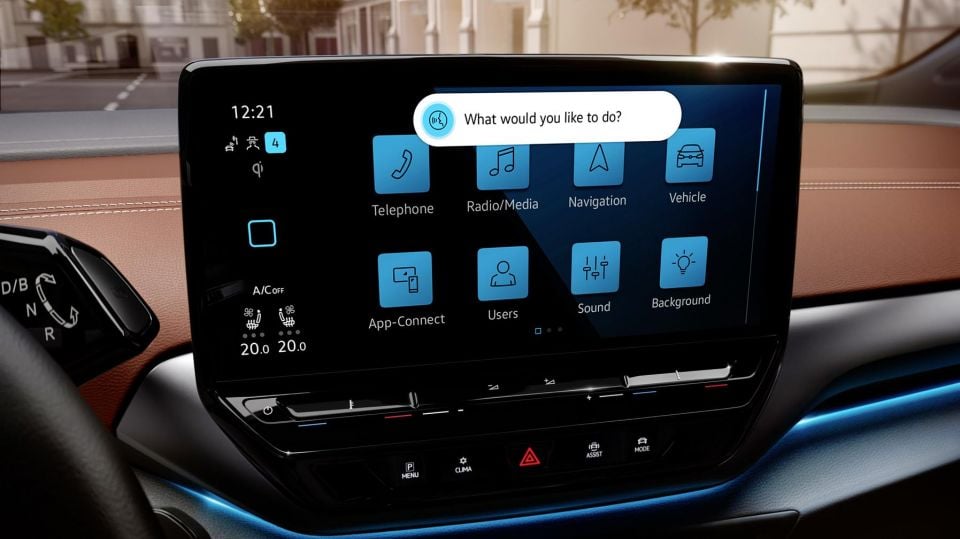
The infotainment touchscreen is a 12.0-inch display that includes wireless Apple CarPlay and Android Auto, along with inbuilt satellite navigation. It’s let down by the use of sliders controls for things like volume and climate controls.
This functionality has been addressed as part of the update just released in Europe, which features a larger infotainment display, backlit slider controls and improved infotainment functionality.
It doesn’t appear to address the touch-sensitive haptic feedback steering controls on the steering wheel, however, which are hard to use and easily triggered unintentionally when driving.
The materials used in the cabin didn’t feel as premium as the recent update gifted to the smaller ID.3, which received a raft of soft-touch materials in the cabin that elevate the ambience. The ID.5 we tested felt a little dated in that department and could be something that’s updated ahead of the car’s launch in Australia.
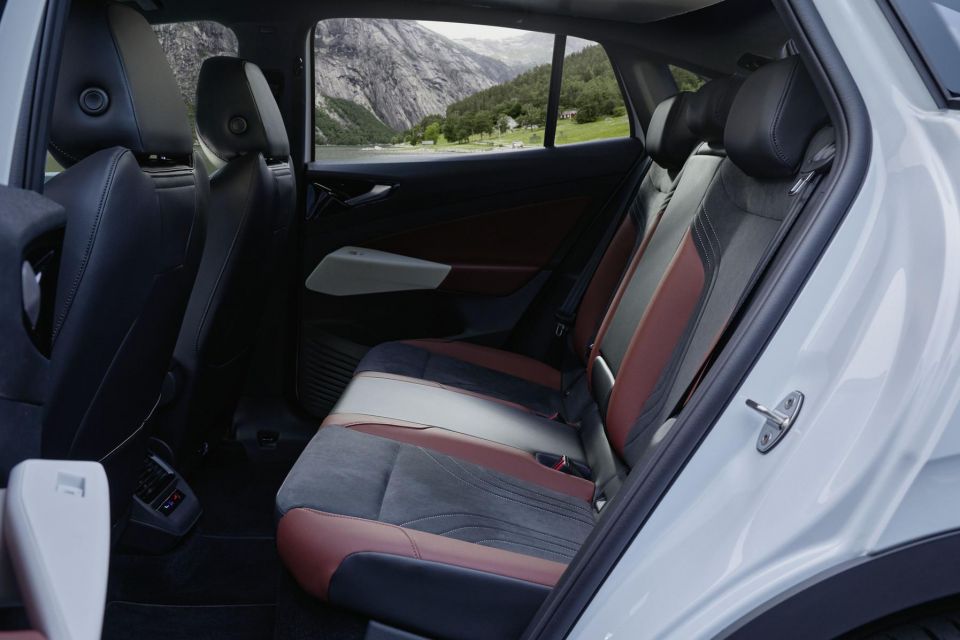
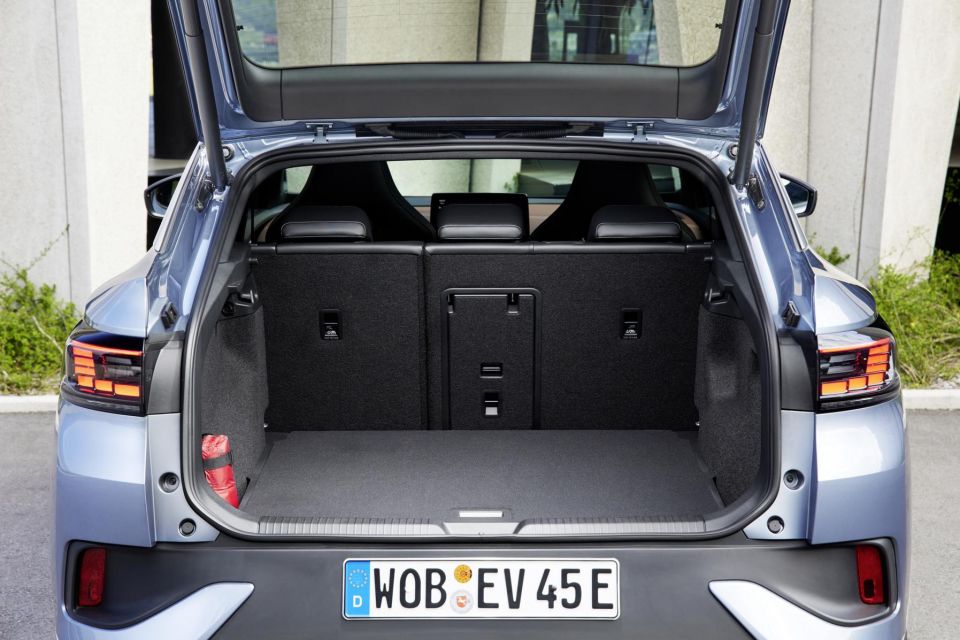
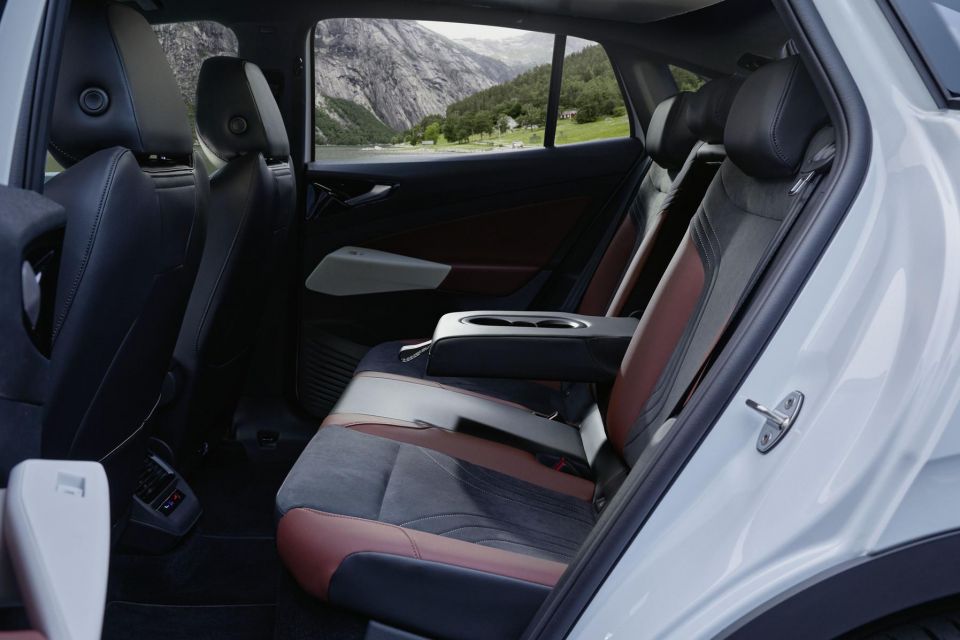
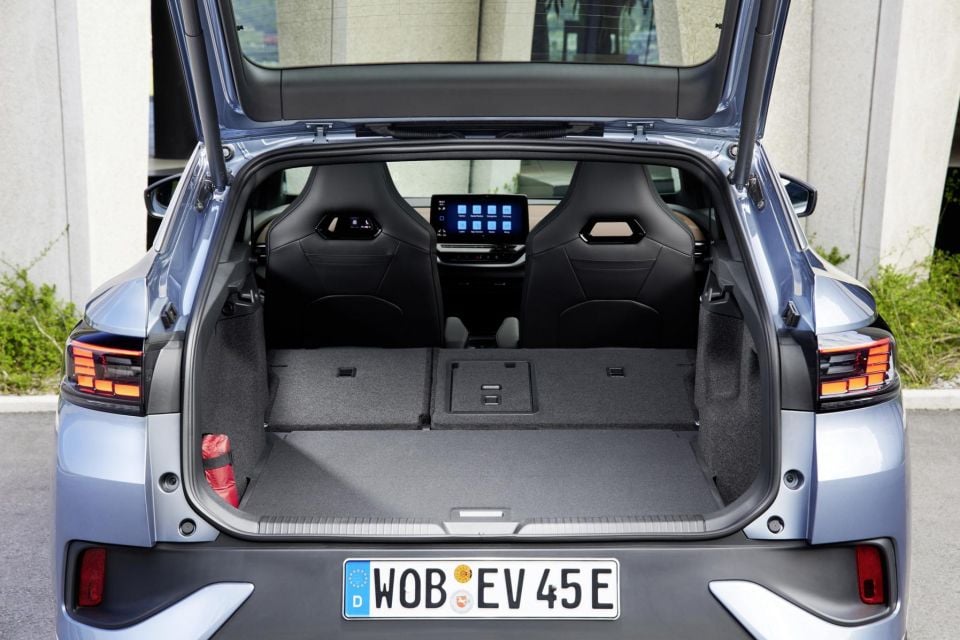
Cargo capacity comes in at 549 litres with the second row in place, and expands to 1561 litres with the second row folded.
Compared to its peers it’s par for the segment. While Tesla quotes a figure closer to 900 litres with the second row in place, it’s measured to the roof, which would be a dangerous way to load the vehicle given it lacks a parcel shelf. Fitting one would then split the space and reduce the figure significantly.
But unlike the ID.5, the Ioniq 5, EV6 and Model Y all feature front storage space.
The ID.5 GTX uses a twin-motor setup that features an asynchronous motor on the front axle and a permanently excited synchronous motor on the rear axle.
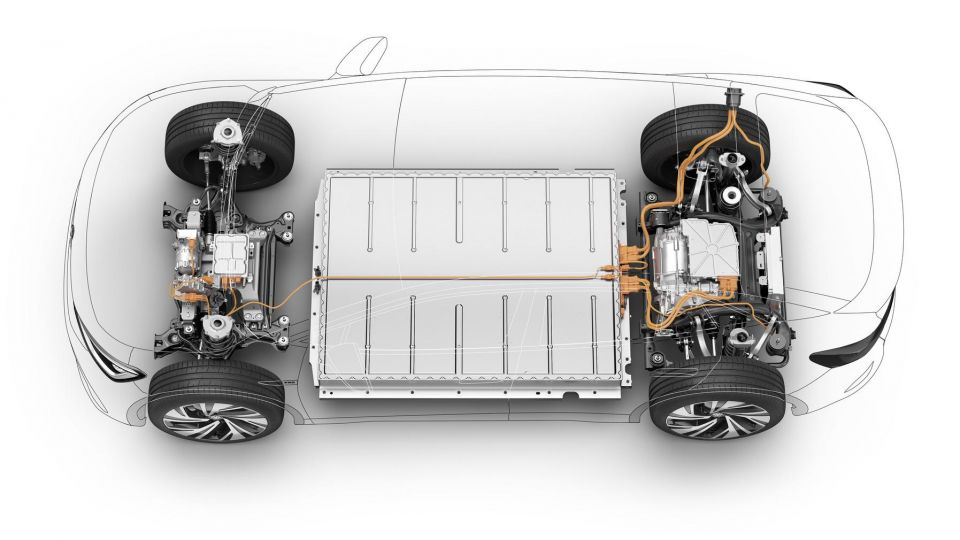
The combination produces a combined power output of 220kW of power and 460Nm of torque (split 162/310Nm between the front and rear axles).
This combination offers a 0-100km/h time of 6.3 seconds. It’s pretty leisurely compared to vehicles like the Model Y Long Range, Hyundai Ioniq 5 AWD and Kia EV6 AWD, all of which sit much closer to the 5.0-second mark.
The upgraded drivetrain confirmed for the ID.4 and ID.5 GTX variants will see power increase to 250kW of power, but it’s unclear if combined torque output has increased as a result of the power bump.
Volkswagen claims a combined energy consumption figure of 17.1kWh/100km and a driving range of up to 490km on the WLTP cycle. The new rear motor being fitted to the ID.5 in 2024 is also expected to improve driving range.
Charging comes in the form of up to 11kW three-phase AC, while DC charging offers up to 175kW at its peak, with an average of 115kW. The battery type is lithium-ion and is 77kWh (usable) in capacity.
I mentioned in our recent drive of the Volkswagen ID.3 that I was quite impressed with how quiet the drive experience was – it’s the same story in the ID.5.
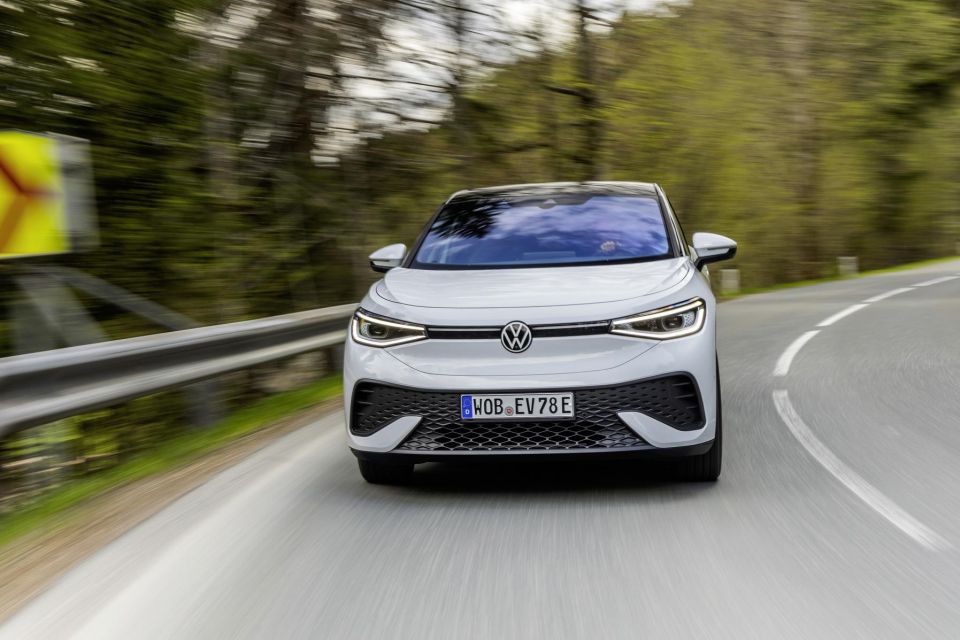
You expect an electric vehicle to be quiet, but that often unearths other annoying noises like whine from the electric motors or road noise from the tyres. The ID.5 glides along quietly with very little road and motor noise entering the cabin.
With 460Nm of torque available, acceleration is reasonably good for a mid-sized SUV. But when you’ve been spoilt with mid-sized electric vehicles like the Ioniq 5, which pumps out just over 600Nm of torque, it’s easy to feel like it’s not enough.
The upgraded drivetrain coming soon to the ID.5 GTX is expected to help sharpen that feeling behind the wheel, with power output increased to 250kW.
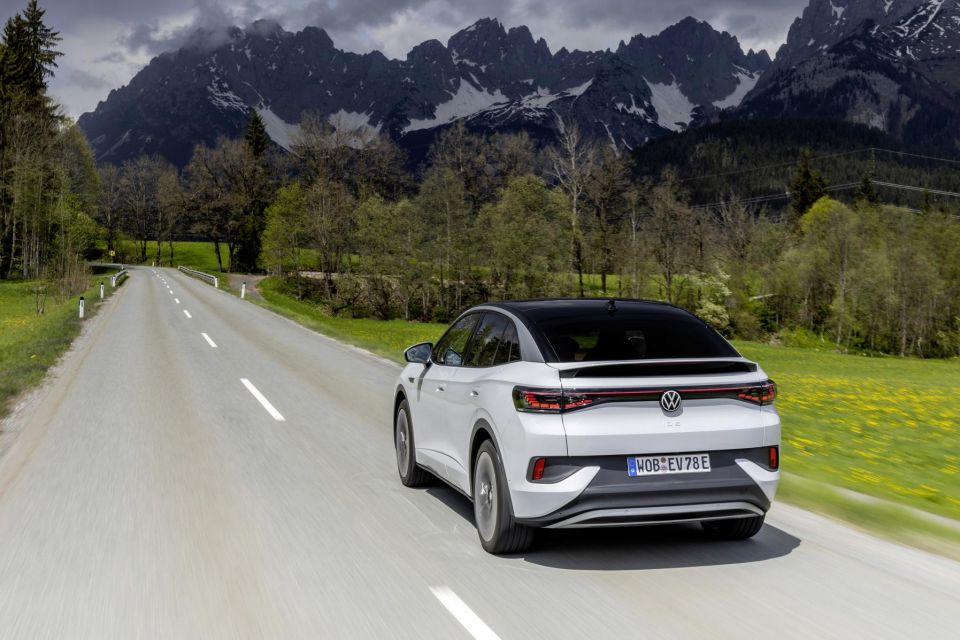
Our drive had us covering a section of derestricted Autobahn where we were able to reach the top speed of 180km/h without too much issue.
Ground clearance of 163mm meant the ID.5 stuck pretty close to the road and didn’t get the floaty feeling some larger SUVs get when they hit terminal velocity on a derestricted stretch of road – not an issue for Australia’s draconian speed limits, mind you.
It was on the perfectly paved stretches of road in Austria where we had the chance to stretch the GTX’s legs. The Grossglockner is Austria’s highest peak and after spending almost $100 to get a ticket to drive up it, we began the leisurely drive.
Volkswagen claims to have improved the ride in the latest ID.5 revision, as well as more precise handling. We didn’t think there was anything overly wrong with the adaptively damped setup in the ID.5 GTX, keeping in mind the roads we drove were predominantly smooth.
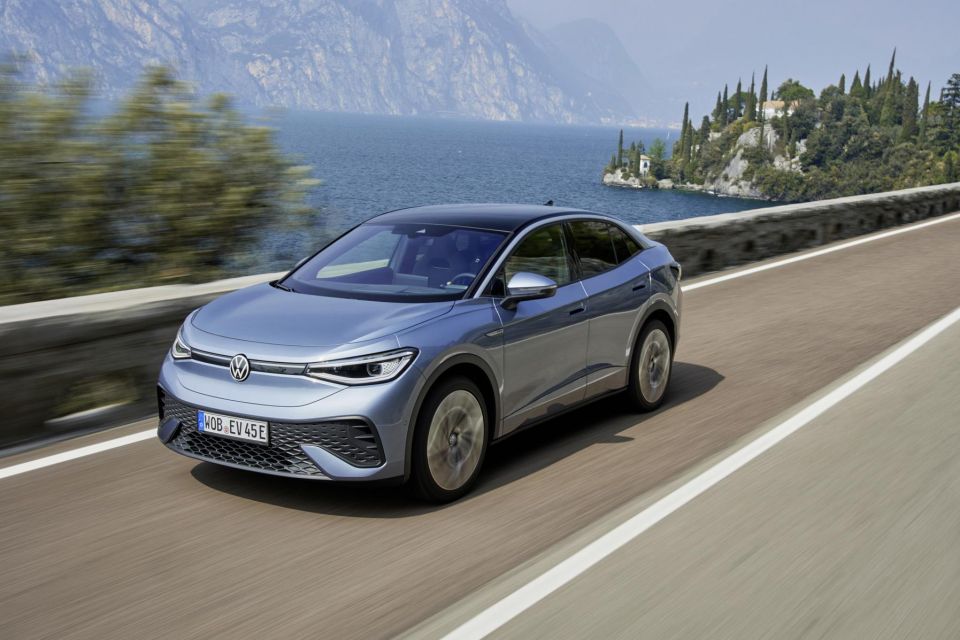
It doesn’t handle as sharply as something like a Model Y or EV6, and features a much softer tune setup for comfort. As a result, sharper corners introduce friction limits from the tyres and a degree of body roll. Not the end of the world, given it’s not really billed as a super sporty vehicle.
One thing that did frustrate was the lack of a single-pedal drive mode. You can enter the vehicle’s ‘B’ setting, which increases the amount of regen, but it doesn’t slow the vehicle to a stop or vary its level of regen enough to rely on it as the only pedal you use to drive like you can in most competitors.
Visibility out the front and sides is good, but a little compromised out the rear thanks to the narrow envelope out the rear window. Just like the ID.3, the ID.5 exhibited the same torque throttling effect when it detected even the slightest wheel slip out of a corner.
This resulted in a constant on/off throttle effect when trying to drive in a sporty manner on tight roads. It’s overcome by switching the vehicle into its ESC Sport setting – but we feel it could be a little less restrictive out of the box.
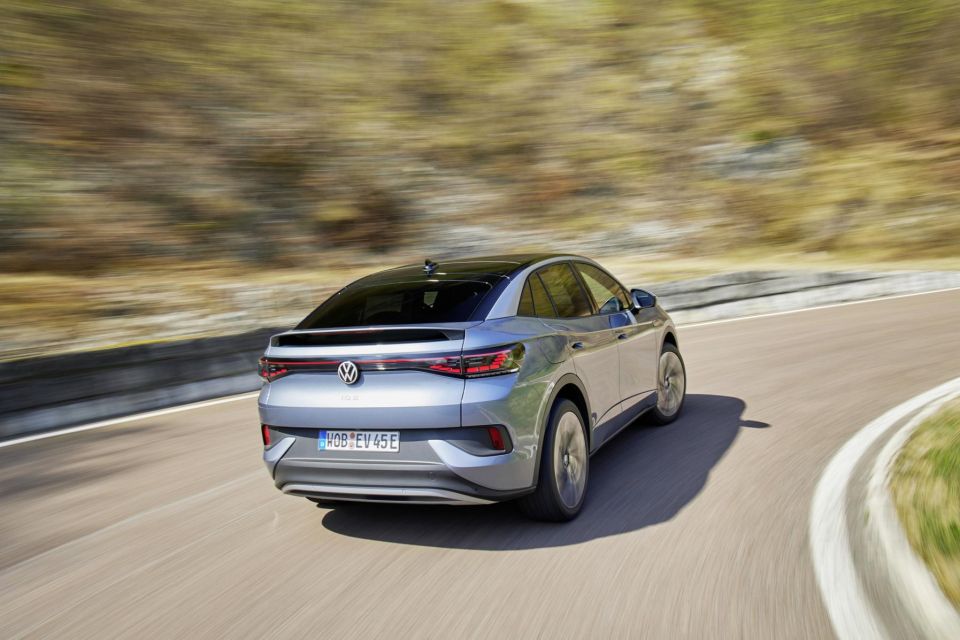
One of the best things about climbing a massive mountain like the Grossglockner in an EV is coming back down it. The descent was awesome because you could sit the vehicle in its ‘B’ mode and add driving range as you descended down the mountain again.
Not to mention the incredible number of EV chargers littered throughout Germany and Austria. The satellite navigation display does a great job of displaying the upcoming chargers, along with their charging capacity and availability – all infrastructure we don’t really have in Australia.
While the ID.5 hasn’t been crash tested or rated by ANCAP, it has been crashed and rated by Euro NCAP – it scored a five star crash rating in testing back in 2021.
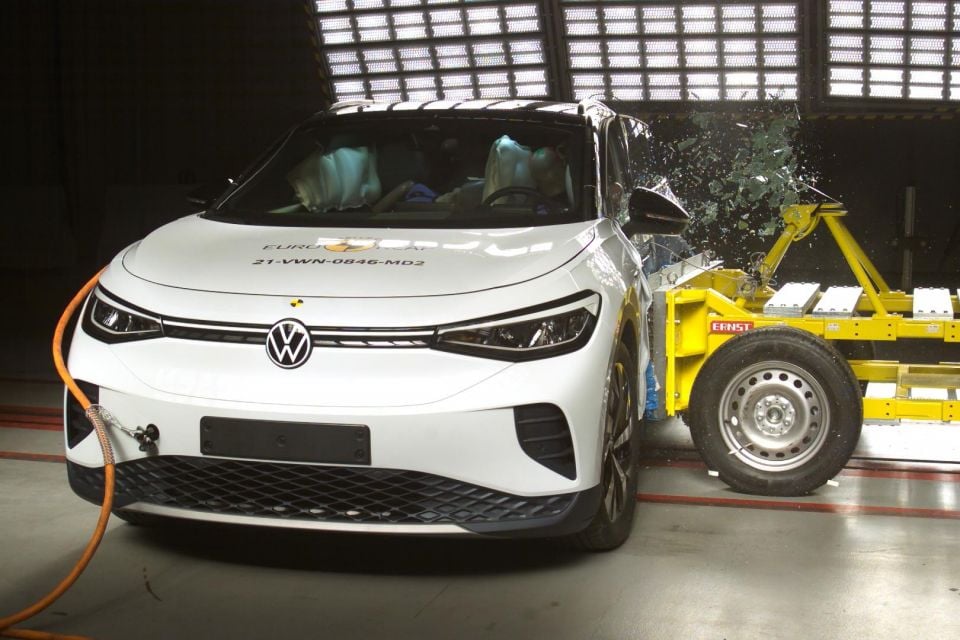
It scored a 93 per cent adult occupant protection rating, an 89 per cent child occupant protection rating, a 76 per cent vulnerable road user rating and a 85 per cent safety assist rating.
Standard safety tech includes autonomous emergency braking with pedestrian and cyclist detection, radar cruise control, blind spot monitoring, rear cross-traffic alert, front and rear parking sensors, as well as reverse AEB.
The mid-sized electrified SUV space is hotting up. More competition is a good thing because it’s likely to mean more aggressive pricing and better deals for consumers.
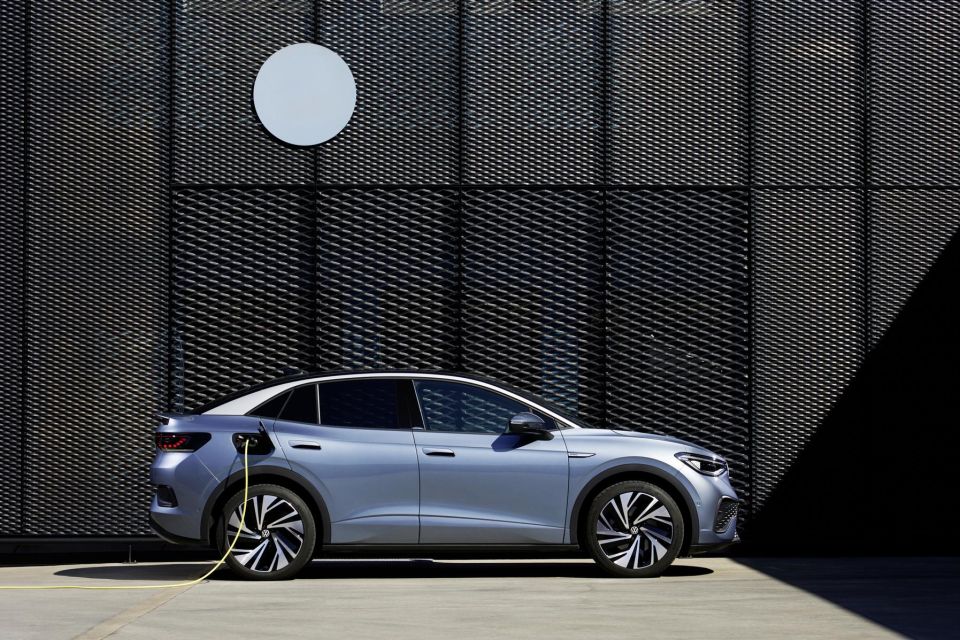
While we were pretty impressed with the packaging of the ID.3 in general, the ID.5 GTX feels a little less impressive.
It lacks the punch of its peers, and the interior presentation feels like a step back from the futuristic styling of Ioniq 5 and EV6 and the tech-laden Model Y.
Volkswagen will need to sharpen the drivetrain and pricing ahead of the ID.5’s arrival to Australia, especially if it wants to compete with brands like Hyundai, Kia and Tesla, which already have strongholds on the segment.
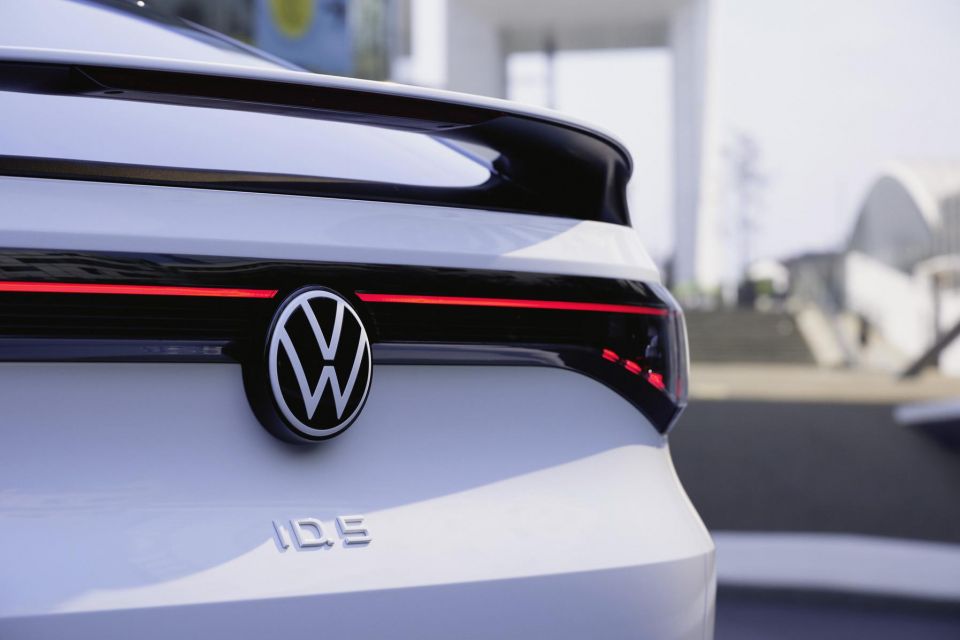
Click the images for the full gallery
Where expert car reviews meet expert car buying – CarExpert gives you trusted advice, personalised service and real savings on your next new car.
Paul Maric is a CarExpert co-founder and YouTube host, combining engineering expertise with two decades in automotive journalism.


CarExpert.com.au
4 Hours Ago
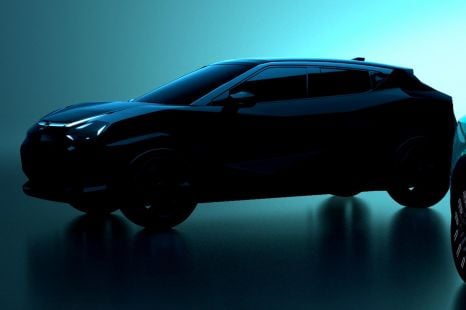

Damion Smy
18 Hours Ago
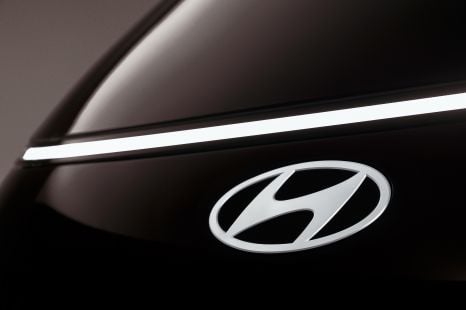

Damion Smy
21 Hours Ago
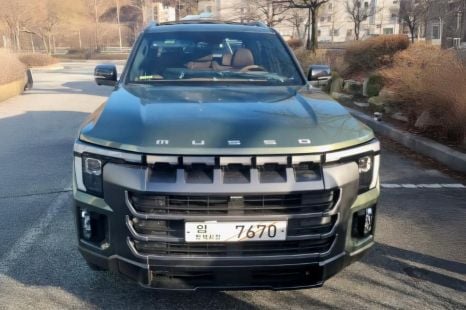

Damion Smy
1 Day Ago


Damion Smy
1 Day Ago
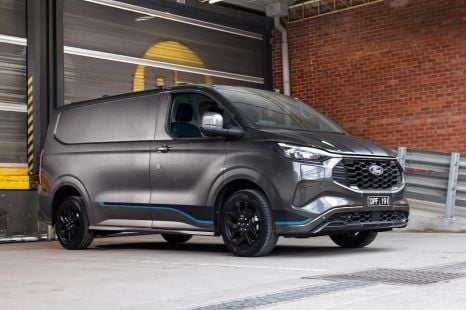

Damion Smy
1 Day Ago